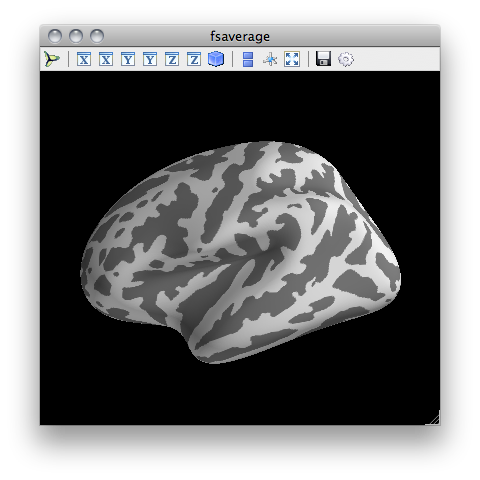The command-line interface¶
Introduction¶
The command-line program pysurfer is designed to largely replicate
Freesufer’s tksurfer command-line interface in the format and style
of arguments it accepts. Like tksurfer, invoking it will initialize
a visualization in an external window and begin an IPython session in the
terminal, through which the visualization can be manipulated.
Initializing a simple visualization session is quite easy. Simply call
pysurfer with three positional arguments: the subject_id, the
hemisphere, and the surface geometry to visualize:
pysurfer fsaverage lh inflated
which will open a viewing session that looks like this:

Manipulating the visualization¶
Once the viewer window is open, there are two ways to manipulate the visualization. To see other angles, zoom in or out, and translate the brain, simply click and drag with your mouse. See the Mayavi documentation for more information about using the mouse and keyboard to interact with a Mayavi scence.
When pysurfer finishes loading the visualization, it initializes an
IPython session in terminal, which allows for a more comprehensive
interaction with the scene. The IPython interactive namespace will
include a brain variable, which is bound to the Brain
object underlying the visualization. For convenience, the b variable
is also mapped to this object. (As a reminder, you can always type
whos in an IPython prompt to see the contents of the interactive
namespace.) See the Brain documentation for full information
about how to control the visualization in this way.
Other command-line options¶
As in tksurfer, most aspects of the visualization can be initialized
from the command-line. To get a full documentation of the command-line
interface, simply type pysurfer at a terminal prompt and hit enter.
